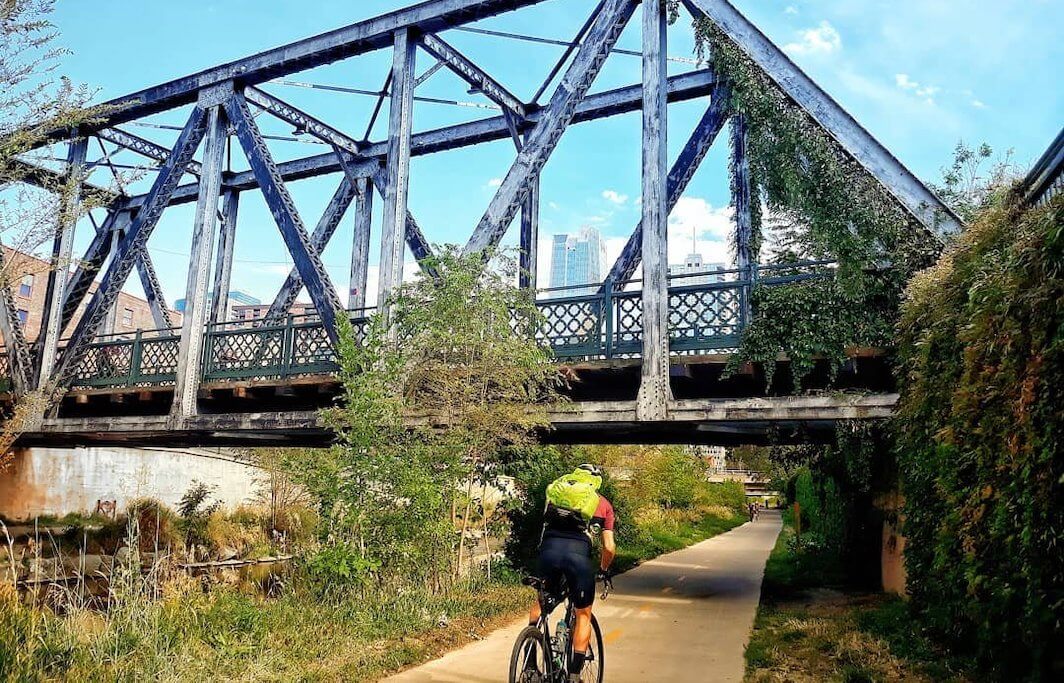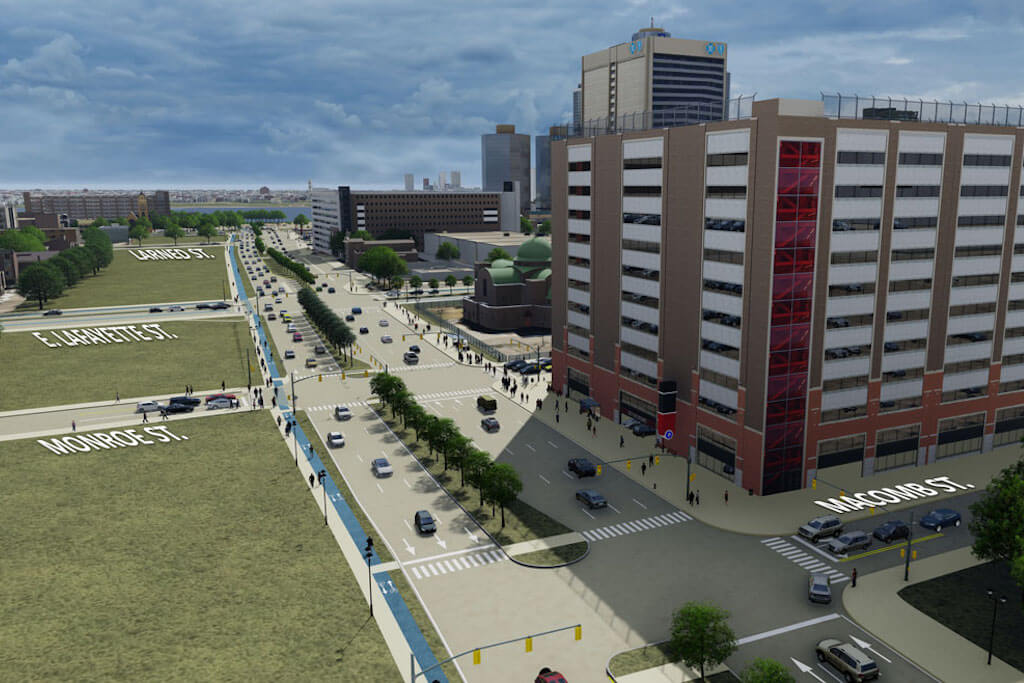Autumn Gear Guide
Find inspiration in our Gear Guide that will keep you out on your bike through wind or rain.
Download NowSeeds of bicycle-friendly cities are blowing across the land and pockets of people-powered neighbourhoods are blooming.
The United States has always had its bicycle-friendly cities whether it was Portland or San Francisco. They might not have been Copenhagen, but it is something. A decade ago, these were the outliers. No longer. Now, seeds of bicycle-friendly cities are blowing across the land and pockets of people-powered neighbourhoods are blooming. And it’s a beautiful thing to see.
As more people realise the positive impact of an investment in safe bicycle infrastrucuture on physical and mental health but also the economic and environmental benefits, the more demands are being levelled on local governments. The more people demand safe cycling infrastructure, the more cities rise to the call and reap the rewards. And there are plenty of rewards.
Here are three American cities making things happen right now.
When Boston Mayor Michelle Wu was running for election, she made it clear that an expansion of the city’s bicycling network was a priority as part of her Green New Deal plan.
Although it took longer than cycling advocates in the city would have liked, a big push to protect vulnerable road users including cyclists is now underway after announcing the three-year plan dubbed “Everyone Deserves Safe Streets” last fall.
The goal of the plan is to create a citywide network that would put each and every Bostonian within three minutes of a protected bike lane.

The plan would also further expand the city’s public bike share system, build speed humps in 30 communities, add 75 raised crosswalks, as well as helping 600 women “gain confidence in riding bikes.”
The city is expanding its 59-mile network of off-street paths and separated bike lanes by an additional nine miles to be completed by December of this year.
“Now more than ever, the health, well-being, and economic empowerment of our communities depend on people having safe, reliable ways to get where they need to go,” said Mayor Michelle Wu, when the plan was announced. “We’re working to transform our streets so all road users are protected and everyone can benefit from the opportunities across our city. Building out a safe, connected cycling network will help close transportation gaps across our neighborhoods and advance our efforts to make Boston a city for everyone.”
According to the city, 10 to 25 percent of all peak time Boston traffic is people on bikes. So, making these people safer and creating the right infrastructure will only increase this number. The impact will be large.
“I believe everyone deserves freedom to choose biking as a mode of travel and I’m so thrilled to support a Mayor who is building a sustainable Boston for all,” said Elijah Evans, executive director of Bikes Not Bombs. “I’m supportive not only for what this expanded network symbolizes but also because it’s a sign that we will no longer continue to be strangled by the car culture that forces many folks in the Black community into poverty, leaving us trapped in a world in which we continue to fight over resources.”
The City has also announced a $1.5 million electric bike rebate program for seniors and people with disabilities.
Oh, and Mayor Wu bikes to work. Leadership.
An all-too-familiar refrain heard when proposing separated and safe bicycle lanes along major urban corridors is that it could kill business. The data does not support this, but that doesn’t stop the accusations. But when Denver set about planning for a major project to build separated bike lanes along Broadway it was welcome news for the local business community. So maybe times they are a changin’ in the Mile High City.
Denver is on its way to completing work on bike lanes announced in 2018 that would bring the total network in city to more than 300 miles. But, most of those bike lanes are not separated from traffic. So there is still much work to be done, and it appears as though that will happen with news of the installation of a two-way protected bikeway starting at 7th Avenue near the Cherry Creek Trail, down to Center Avenue, creating an important new north/south connection in the city’s bike network.

The bikeway itself will be a first of its kind for Denver, incorporating two-way travel along a 1.5-mile stretch of roadway with vertical protection. Concrete curbing and a row of parking will separate the bikeway from the vehicle travel lanes.
“After years of advocacy from small businesses on Broadway and citizens all across District 7, we will finally have a premiere bicycle facility on Broadway,” said District 7 Denver City Councilman Jolon Clark. “This bike lane will make Broadway safer for all users, enhance the quality of life for our citizens, and give a big economic boost to our small businesses on the corridor as it connects to Denver’s broader bike network.”
The city is also bringing back its e-bike voucher program, which was paused because demand was so high. According to the city’s Office of Climate Action, Sustainability and Resiliency 860 rebate vouchers are available this year. Denverites can save $300 off the price of an e-bike, and residents who qualify for the income-qualified rebate can save $1200 off the price of an e-bike. Purchasing an e-cargo bike adds an extra $200 to both the standard and income qualified vouchers.
“E-bikes are an effective and affordable way for people to move about the city and to meet our city’s ambitious climate action goals,” Mayor Michael B. Hancock said. “This program showed there was a desire in our community for new, sustainable mobility options, and I’m excited to see the e-bike rebate program expand and continue to evolve our residents’ transportation habits.”
A half-century ago, Detroit was steeped in Motor City mayhem and there were cars and car companies everywhere. But about a decade ago things started to change. And that trend has continued, establishing Detroit as a growing bicycle-friendly city.
In the past decade, the city’s cycling network has blossomed from 55 miles of bike trails to more than 225. Detroit Public Works continues to install two-way cycle tracks on major routes and recently dropped its first sidewalk-level bike lane as part of the Livernois Streetscape Project. Of course, the city is also home to the legendary Slow Roll, bicycle rides, which indicates a serious interest in urban cycling. In addition, e-bike brand Vela recently set up shop in Detroit, where it will partner with the very cool commuter bike company Detroit Bikes.
Things are happening.

Rendering of the I-375 project
The roots of the current bicycle network plan go back more than five years when the city teamed up with the consultants at Copenhagenize, and the growth in bike infrastructure has continued since and even sped up in recent years.
There are also major projects in the works that will further establish Detroit as a bicycle-friendly destination including the 27-mile Joe Louis Greenway as well as ripping up the I-375 freeway. The I-375 Reconnecting Communities Project will remove the old freeway that wrecked a thriving Black neighborhood and entertainment district. In its place will be a more human-centered urban boulevard design. Of note for cyclists, the city notes that plan will include a “two-way cycle track on the east side of the boulevard connecting the riverfront to the Montcalm Street extension and will extend west to Brush Street and east to Gratiot Avenue, where it will connect with the Dequindre Cut bicycle path.”
“I’ve been advocating for six years to fill in this ditch and knit this city back together,”said Detroit Mayor Duggan, at a press conference announcing the plan. “Detroit has been divided by this freeway for nearly 70 years.”
Mayor Duggan and company cut the ribbon opening the first section of the impressive Joe Louis Greenway this past October. Sure, it was only one of 27 planned miles of bicycle and walking trails, but the project has been dubbed transformational for the city. Indeed, the framework plan for the Greenway has already won a national planning award.
According to the city, the Joe Louis Greenway, built on an abandoned rail line, will connect Detroiters in 23 neighborhoods to existing trails like the Dequindre Cut, the Detroit Riverfront, four other cities, and each other. When complete, 40,000 residents as well as visitors will be able to walk to the greenway within 10 minutes, and it will connect to five other cities.
Find inspiration in our Gear Guide that will keep you out on your bike through wind or rain.
Download Now
DETROIT, PROUD!
Comments are closed.